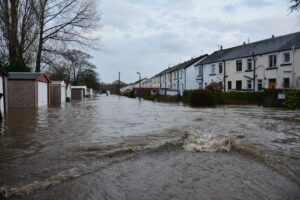Do’s & Don’ts of Water Damage in Homes
 Water damage in your home is one of the worst nightmares for a homeowner because of the number of issues it can cause and its possible impact. Knowing the dos and don’ts of water damage is the best way to reduce the chances of things going from bad to worse. However, before looking at the guide, let’s first address why it is critical to take necessary precautions when dealing with water damage.
Water damage in your home is one of the worst nightmares for a homeowner because of the number of issues it can cause and its possible impact. Knowing the dos and don’ts of water damage is the best way to reduce the chances of things going from bad to worse. However, before looking at the guide, let’s first address why it is critical to take necessary precautions when dealing with water damage.
When You Have Water Damage in Your Home
Water damage will put you in the undesirable position of looking at the devastation to your property. However, dealing with it improperly is dangerous because of two main reasons:
1. It can endanger your health
Trying to repair water damage yourself without knowing enough about the source of damage or the dirtiness of water can put your health at risk. Most people have the same approaches for cleaning up excess water in their homes and the decision can put them in harm’s way.
While clear water isn’t a threat, greywater is likely contaminated with dangerous chemicals, while black water is considered a grave health threat.
2. It can increase water damage to property
Without knowing the suitable mechanics of cleaning up after water damage, you may end up increasing the damage to your property and belongings. You may feel a desperate need to do something, but acting on this urge is not worth it if you don’t know what you’re doing.
The Do’s of Water Damage at Home
Following is a list of things you can do to reduce water damage.
1. Call for Help
Calling for help should be your first step after discovering water damage because you will need water damage restoration as soon as possible. You can call 911 Restoration in Antelope Valley if you are facing water problems in the area. Our teams are available 24/7 and will reach you within 45 minutes of your call.
2. Remove Water While Help Arrives
One of the best ways to mitigate water damage is to remove as much water as you possibly can. You can use a mop or try blot drying to prevent the water from touching your furniture and worsening.
3. Take Pictures for Insurance Records
Make sure you keep a record of all the damage and keep it safe. It will help you when you are filing for insurance claims. These pictures will act as evidence and reveal the extent of the destruction, thus allowing you to avoid the cost of home restoration and repairs.
4. Contact Insurance Provider
Contact your insurance provider right after calling for help to let them know of the situation. The sooner they know about the damage, the sooner they will visit to view the damage in person and start the paperwork.
5. Ventilate the Area
You should ventilate the area as much as possible to keep infectious diseases and horrible odor. Ventilation prevents an increase in room temperature, which prevents the growth of infectious microorganisms that can endanger your health.
6. Wipe Furniture
You can’t carry furniture out, but you can wipe it down to keep it dry and safe from damage while waiting for help to arrive.
7. Place Aluminum Foil Between Furniture and Carpet
If the water damage at your home is not above surface level, you can keep the lower part of your furniture safe by placing sheets of aluminum foil between furniture legs and the ground. This practice will bar the water from affecting the furniture.
The Don’ts of Water Damage at Home
You know what you can do to reduce the impact of water damage, but here are a few tips for what you should stop doing to minimize water damage.
1. Using Electric Appliances in the Area
This suggestion is relatively evident, but we want to cover it for people who may not understand. Trying to clear away that wet patch on the carpet with a vacuum cleaner is not the great idea you think it is. You might get electrocuted in the process.
2. Try Removing Heavy Furniture
You may be strong, but don’t remove heavy furniture from the room to protect it against water damage. Leave this job to us or your home restoration company because our technicians have undergone training that helps them optimally distribute the object’s weight.
3. Clean-up Sewage Water
You have no idea how clean or dirty the sewage water is right now, and exposing yourself to it will negatively impact your health. Since you also don’t know gear protocols when cleaning toxic waste, you may also carry infections outside the area, possibly spreading them to people in the surrounding areas.
4. Place Newspapers on Wet Areas
Finally, please stop trying to blot water using newspapers. Paper effortlessly absorbs water and disintegrates after reaching saturation, especially on carpets. Instead of reducing water damage, you will end up with a wet carpet littered with wet shredded pieces of your newspaper.
In a Nutshell
Overall, trying to reduce water damage in your home or property without knowing what helps and what doesn’t will only increase the destruction. Make sure you follow this guide while waiting for the 911 Restoration team in Antelope Valley to reach you at their earliest.
If you want to get home restoration service, call us at (661) 401-7303 or contact us through this link. We offer a free visual inspection for property owners!



